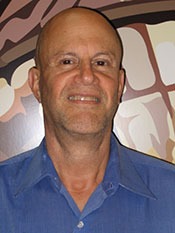Program Information
A Concise Introduction to MRI Physics
A Wolbarst1*, N Yanasak2*, R Stafford3*, (1) University Kentucky, Versailles, KY, (2) Georgia Regents University, Augusta, GA, (3) UT MD Anderson Cancer Center, Houston, TX
Presentations
7:30 AM : Spin-Up/Spin-Down NMR in a Voxel; T1; Proton-Density MRI in 1D - A Wolbarst, Presenting Author8:10 AM : Classical NMR; T2; FID - N Yanasak, Presenting Author
8:50 AM : The Spin-Echo Sequence; k-space - R Stafford, Presenting Author
TU-AB-108-0 (Tuesday, August 1, 2017) 7:30 AM - 9:30 AM Room: 702
Magnetic resonance imaging (MRI) not only reveals anatomic details of the body, as does CT, but it also provides functional and physiological information, like nuclear medicine. It can display high-quality 2D and 3D images of organs and vessels viewed from any angle, with resolution better than 1 mm. MRI is perhaps most extraordinary and notable for the plethora of ways in which it can create unique forms of soft-tissue contrast, created through fundamentally different biophysical phenomena.
There is no risk from ionizing radiation to the patient or staff, as with ultrasound, since no X-rays or radioactive nuclei are involved. Instead, clinical MRI harnesses strong uniform, weak gradient, and radiofrequency magnetic fields to probe the stable nuclei of the ordinary hydrogen atoms (isolated protons) occurring in water and lipid molecules in tissues. MRI consists, in essence, of creating spatial maps reflective of the microscopic electromagnetic environments around these hydrogen nuclei. Spatial variations in proton surroundings can be related to clinical differences in the biochemical and physiological properties and conditions of the tissues.
Images weighted by the proton density (PD), and by the tissue-specific proton spin relaxation times known as T1 and T2, are three basic contrast mechanisms that can reveal important clinical information. The principles underlying these and other sources of contrast are dissimilar from one another, however, so that they provide utility in different clinical situations. T1 and T2 in a voxel, for example, are determined by different aspects of the rotations and other motions of the water and lipid molecules involved, as constrained by the local biophysical vicinities within and between its cells – and they, in turn, can depend on the type of tissue and its state of health.
Other common applications of MRI exploit its capability to detect and image distinct movements of fluids: MR angiography (MRA), which rivals CT angiography but often requires no contrast medium, monitors the bulk flow of blood. Functional MRI ( f MRI), distinguishes the perfusion of oxygenated blood from that of de-oxygenated blood, and lights up parts of the brain that are being activated by a stimulus, somewhat as PET does with the metabolism of glucose labelled with fluorine-18. Diffusion tensor imaging (DTI) indicates the diffusion of free water along tracts of axons, thereby bringing nerve trunks into view. Magnetic Resonance Spectroscopy (MRS) can inform on tissue metabolism facilitating identification of certain cancers and other lesions. MRI-guidance of needle biopsy can sample brain tissue from a region only millimeters in dimensions. There are numerous variants on all of these themes, and on others as well.
MRI involves deeper and more complex aspects of physics, technology, and biology than do other imaging modalities, and it is widely considered to be correspondingly more difficult to learn. We could probably cover it all rather nicely if we had 50 hours available rather than 2 ̶ but you tell your story in the time you have. The three presenters have combined their efforts to co-author a single slide show that makes the basics of MRI as clear as we can. It starts off easy, but becomes more demanding toward the end. It is far from thorough, but instead seeks to explain some of the essentials in a valid fashion; provide a taste of the numerous capabilities and complexities of the modality; and whet your appetite to learn more.
I. ‘Quantum’ NMR ‒ Anthony Wolbarst
II. ‘Classical’ NMR ‒ Nathan Yanasak
III. Spin-Echo/Spin Warp Reconstruction in a 2D Slice ‒ Jason Stafford
I. ‘Quantum’ NMR. Our presentation begins with a preliminary sketch of nuclear magnetic resonance (NMR) of lone protons, such as in water. One thinks (loosely) of each of them rotating about an axis and, since they are charged, generating atomic-sized magnetic fields, so their spin-axes tend to align in a strong external magnetic field, much like a compass needle. As with the Bohr atom, this spin-up/spin-down picture is a highly abridged version of a rigorous quantum treatment, but still it leads to some legitimate and pedagogically valuable results. In particular, it allows the description of the simplest form of MRI, in which NMR is carried out one voxel at a time throughout the patient, in essence a multiple 0-dimensional approach. This leads, with the addition of a linear x-gradient field along a multi-voxel, one-dimensional patient/phantom aligned along the x-axis, determination of the water content of each of its compartments – an example of a realistic MRI study, albeit in 1D. This, in turn, proceeds to a brief investigation into the biophysics of the form of proton spin-relaxation process characterized by the time T1. There follows a case study illustrating a half dozen ways in which MRI can provide valuable clinical information.
II. ‘Classical’ NMR. This section begins with the design and workings of a clinical MRI machine. A second method of introducing NMR then makes use of the so-called ‘Classical’ picture, in which a cohort of protons behaves in a magnetic field much like a gyroscope in gravity. With this model, which can be derived rigorously from quantum mechanics, we focus on the time dependence of the expectation value of the magnetization produced by the protons in the voxel at position x, namely
III. Spin-Echo / Spin Warp Reconstruction in a 2D Slice. Here we describe the clinically important Spin-Echo radiofrequency and gradient magnetic field pulse sequencing and reconstruction technique for imaging. At first we restrict application of Spin-Echo to a 1D patient, and consider how to manipulate the image acquisition parameters so as to produce clinical pictures with contrast dominated by spatial variations in PD, T1, or T2. We conclude by demonstrating the spin-warp approach to imaging in 2D with a simple 2×2 matrix, 4-voxel example.
Learning Objectives:
1. The processes of NMR and proton spin relaxation in a tissue voxel in a uniform magnetic field.
2. Combining spin-up/spin-down NMR with a linear gradient to effect frequency-encoding of voxel spatial position and create a proton density MRI map of the contents of multi-voxel 1D phantom.
3. The ‘classical’ model of NMR to generate a Free Induction Decay (FID) image of the 1D phantom, which involves use of the Fourier transform in k-space, and then go on to create Spin-Echo images.
4. Extending Spin-Echo imaging into 2 and more dimensions with Spin-Warp.
Handouts
- 127-35677-418554-127118.pdf (A Wolbarst)
- 127-35678-418554-127775-256377884.pdf (N Yanasak)
- 127-35679-418554-126988-834846544.pdf (R Stafford)
Contact Email:





